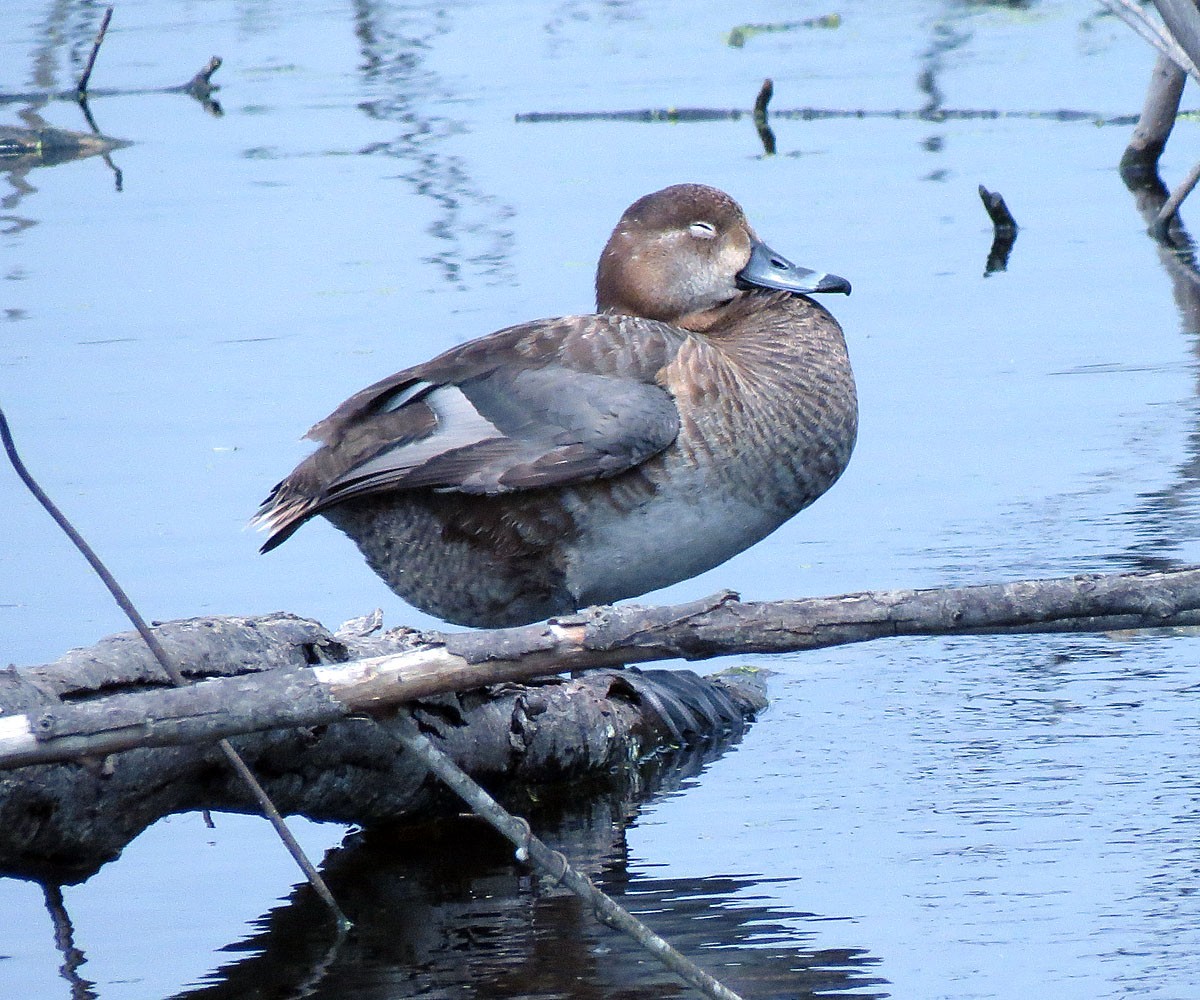Mottled Duck
A species of Anas Scientific name : Anas fulvigula Genus : Anas
Mottled Duck, A species of Anas
Botanical name: Anas fulvigula
Genus: Anas
Content
Description People often ask General Info
 Photo By Don Faulkner , used under CC-BY-SA-2.0 /Cropped and compressed from original
Photo By Don Faulkner , used under CC-BY-SA-2.0 /Cropped and compressed from original Description
The adult mottled duck is 44 to 61 cm (17–24 in) long from head to tail. It has a dark body, lighter head and neck, orange legs and dark eyes. Both sexes have a shiny green-blue speculum (wing patch), which is not bordered with white as with the mallard. Males and females are similar, but the male's bill is bright yellow, whereas the female's is deep to pale orange, occasionally lined with black splotches around the edges and near the base. The plumage is darker than in female mallards, especially at the tail, and the bill is yellower. In flight, the lack of a white border to the speculum is a key difference. The American black duck is darker than most mottled ducks, and its wing-patch is more purple than blue. The behaviour and voice are the same as the mallard. Mottled ducks feed by dabbling in shallow water, and grazing on land. They mainly eat plants, but also some mollusks and aquatic insects. The ducks are fairly common within their restricted range; they are resident all-year round and do not migrate. The breeding habitat is coastal marshes. The nest is built on the ground amongst vegetation, such as bull-rush and marsh grass. Measurements: Male: Length: 19.7-22.5 in (50-57.2 cm) Weight: 30.9-43.8 oz (876-1241 g) Wingspan: 32.7-34.3 in (83.1-87.2 cm) Female: Length: 18.5-21.0 in (46.9-53.4 cm) Weight: 24.7-40.6 oz (699-1151 g) Wingspan: 31.5-327.2 in (80-83.1 cm) 
Size
51-56 cm (20-22 in)
Colors
Brown
Black
Silver
Life Expectancy
20 years
Nest Placement
Ground
Clutch Size
8 - 12 eggs
Incubation Period
1 brood
Number of Broods
25 - 26 days
Feeding Habits
Mottled Duck's diet is omnivorous, including seeds and shoots of grasses, wild millet, smartweed, spikerush, paspalum, sea purslane, wigeon grass, and bulrush, as well as cultivated rice. They feed on invertebrates like snails, crayfish, beetles, amphipods, dragonflies, midges, and occasionally small fish. Mottled Duck strips grass and rice seeds by rapidly opening and closing their bill. Breeding females and ducklings primarily consume invertebrates.
Habitat
The habitat of mottled Duck includes fresh and brackish wetlands with abundant emergent vegetation, thriving in regions with shallow water bodies. These birds are adaptable, colonizing temporary wetlands and human-modified environments like flooded agricultural fields. They are prevalent in both natural settings like coastal lagoons and oxbow lakes, and in man-made habitats such as urban wetlands and drainage ditches across their range.
Nest Behavior
Mottled Duck chooses nesting sites close to water and displays varied site preferences. Nesting is led by females, who build the nests and incubate the eggs.
Nest Characteristics
Mottled Duck typically nests on or near ground level, in a circular, bowl-shaped depression hidden under dense vegetation. The nest is lined with grass litter, shredded grass, and down from the female, measuring about 10.5 inches across and 1.5-3.5 inches deep.
Dite type
Omnivorous
People often ask
General Info
Feeding Habits
Bird food type
Bird Feeder Type

Platform
Behavior
Mottled Duck typically dabble at the water's surface or just beneath for food, often tipping up their tails. They tend to form pairs early, starting in November, with breeding occurring from January to July, peaking in spring. Courtship involves intricate displays and sounds, aimed at potential mates, and can include shaking of heads or tails, preening, and various vocalizations. Pair bonds are primarily seasonal and last until just before hatching. Agonistic behavior is minimal, usually involving bill opening or chasing. Post-breeding, adults molt in small flocks and can form larger groups in favorable feeding areas in autumn and winter.
Species Status
Not globally threatened.